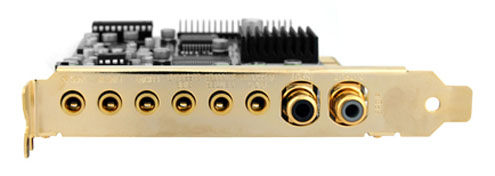I got the Razer Barracuda 3 weeks ago and I waited to write the review until the software worked on my computer; heres another TBCS-Exclusive Indybird Review:
Razer Barracuda AC-1 Gaming Sound Card Subjective Review
Purchase:
I purchased it from Woot.com for $70 (One Day Deal of course). Normally the AC-1 goes for around $170 but Newegg has it on sale for $150.
Specs:
-Razer Fidelity Processor
-7.1 Audio Channels
-192KHz Sample Rate
-24-bit Digital Audio
-117db Signal to Noise Ratio
-Dolby DTS Neo PC, DTS Interactive, Pro Logic II and Headphones
-EAX 2.0
-Optical S/PDIF input and output
-Razer HD-DAI connector for Razer Barracuda HP-1 Headphones
-HD-DAI to 3.5mm input/output ports adapter
-Internal Auxiliary, CD and Front Panel Connections
-PCI Interface
-EMI Shield w/ lighted Razer Logo
Unpacking:
The Razer Barracuda comes in a very attractive box which shows all the information one would need to know about the card.
The back goes into extreme detail about the card's features and specifications. It also has a testimonial of some professional gamer that I've never heard of; I suppose that could be a selling point for someone. When you first open the box, there is a black cardboard cover over everything with the Razer symbol. Flipping this open you can see all of the contents in their cartons.
Contents:
The Barracuda AC-1 comes with the Card (of course), the HD-DAI to 3.5mm Adapter, quick setup guide, manual and a certificate of authenticity for those of you who need to know that you got a real Razer sound card.
The Card:
The Barracuda AC-1 is probably the only sound card (Aside from the ASUS Xonar D2) that I can say looks cool.
The first thing you'll notice is the EMI Shield with a funky design and Razer name and logo on it. This combined with the black PCB, black bracket and gold connectors makes for a very sexy looking piece of audio peripheral. You can see the exposed Razer Fidelity Processor which (from what I've heard) is actually just a re-branded C-Media Oxygen 8788 seen in cards like the Auzentech X-Meridian.
Not much to say about the bottom, its black and um...thats about all. However here you can see that the PCB is actually black instead of really dark brown.
The Auxilary and CD inputs are found at the end of the card along with a unusual "Front Panel" connector.
The weird thing is that this is not a Front Panel Audio connector: it has 14 pins opposed to the regular 10 pins. After some research I've found out that this is either a special Razer connector or a Front Panel Connector for older or newer connections. This brings me to the real front panel audio connector which is near the "HD-DAI" port.
Now speaking of the HD-DAI port here is the back panel of the card.
Here you can see the HD-DAI (DVI-looking) connector (for Barracuda HP-1 Headphones) and the Optical Audio Input and Output. Some reviews have complained about how close the HD-DAI port comes to the edge of the expansion slot and this is a problem, but I fixed this by simply nudging the card upwards before tightening the screw. You may have noticed that there are no 3.5mm analog audio connectors on the card; to get to these you need the "Squid"-style dongle that connects to the HD-DAI port. Sadly these 3.5mm ports do not have connector sensing, and the front panel does not support it either. The HD-DAI port seems like a good idea but I'm not seeing it being used many places other than the HP-1. Razer has already released a new headset that doesn't use this system. Personally I would've much rather has physical analog connections.
Before I move on to the software, lets take a look at those LEDs on the side of the card that people with case windows will be joyous about:
Software
The software included on the disc is the version 1.2 which is (currently) the latest Windows XP driver. If you are using Windows Vista (like me) then you have to go download the Vista Beta drivers off of their site. When I got this card the Vista Drivers were on 2.22b. These drivers installed fine but I had problems with the digital audio settings, analog audio input and front panel problems. I e-mailed Razer support with these problems several times and each time I got a useless response that didn't really answer my questions. Giving up on that I simply waited for the next driver release before writing this review. On February 12th the 2.22c drivers came out. I downloaded them, installed them and most of the problems were solved. The only thing that still doesn't work are my front panel connections (which luckily I don't use too often).
Anyway heres the actual control panel:
Yes, its got that "cool" window design to it. I find these funky shaped control panels found in many programs to be very annoying. If the sound card didn't benefit from numerous features in the Razer control panel then I'd just use the Windows sound card control panel. It wasn't bad enough that they had these funky shapes but they also had to "hide" some options. Here is the control panel with these hidden panels "deployed":
These give you access to the effects and equalizers.
In the main window you can select the analog output type, adjust output and input volume levels, select the digital output type, select the software audio channels, adjust specific speakers, adjust the surround delay and lastly adjust the "Razer ESP" distance. I have no clue what this Razer ESP does (I tried adjusting it and could not hear a difference on my speakers), maybe it has something to do with headphones. The options given for the digital output include:
-Dolby Digital Live
-DTS Interactive
-Digital Audio 44.1KHz
-Digital Audio 48KHz
-Digital Audio 96KHz
-Digital Audio 192KHz
-S/PDIF In Loopback
-S/PDIF Off
I currently have mine set to DTS Interactive; it offers the widest range of software audio input and has clear sound output. I have also used the S/PDIF in loopback for when I am using my Xbox 360 (hooked up via S/PDIF input). This is great but I can only get 2 channel output from my music while the Xbox is in 5.1.
The Effects panel gives you access to Dolby Headphones settings, Dolby Pro Logic II Settings, and Dolby DTS Neo PC Settings. Headphones allows you to get convincing 5.1 out of stereo headphones. I've tried this out and it works great on my AKG K-55 Studio Headphones. Pro Logic II upconverts stereo audio to 5.1, this is what usually have turned on when listening to music. Lastly DTS Neo PC converts normal Stereo, 5.1 or 7.1 audio streams to DTS encoded streams which gives you the DTS quality from any high quality audio source. Also included are the environment settings where you can control what kind of "environment" your music is playing in. Nothing like listening to Techno in "Hangar" (Heavy Reverb) Mode.
The Equalizer panel has exactly what you'd expect in an equalizer panel; a standard equalizer. Also found here are the presets EQ settings and the Save and Load custom EQs. Lastly a interesting addition is the option to control the subwoofer threshold, very nice.
Though the control panel is very ugly and annoying, it has every single option you'll need and stops being a problem after a short while.





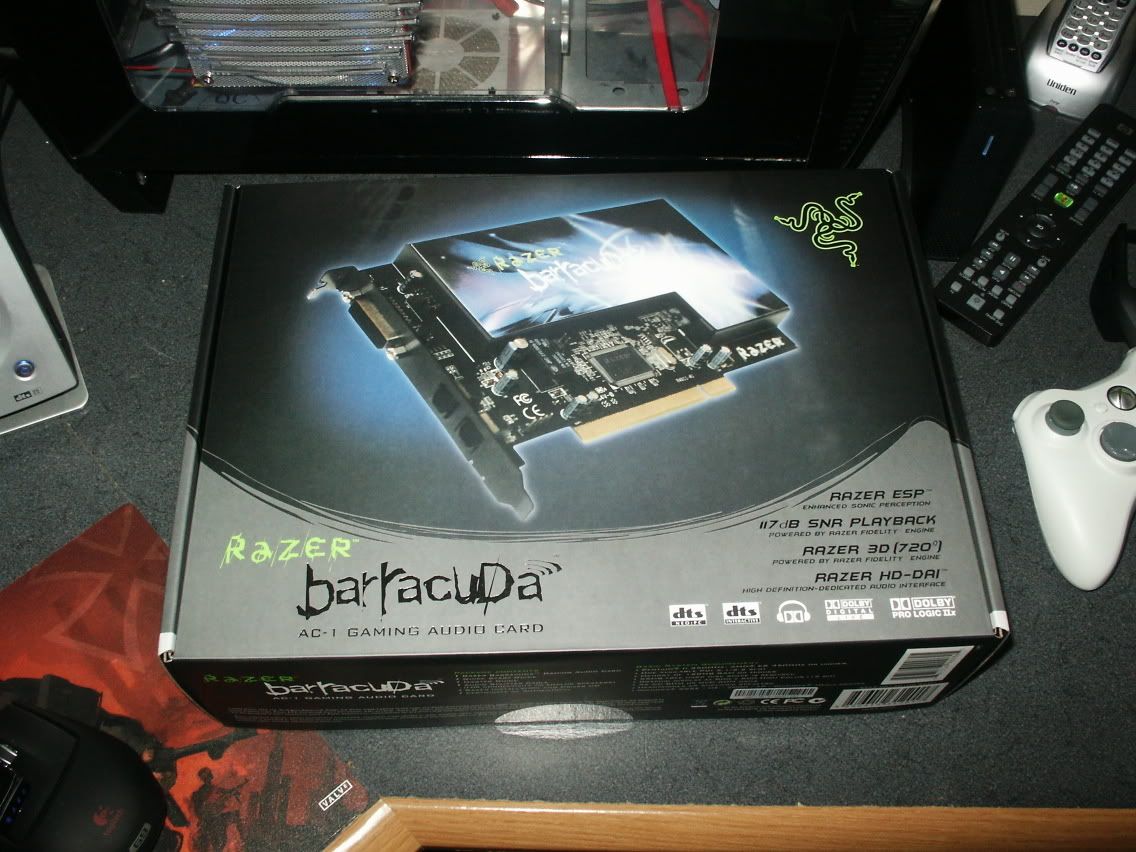
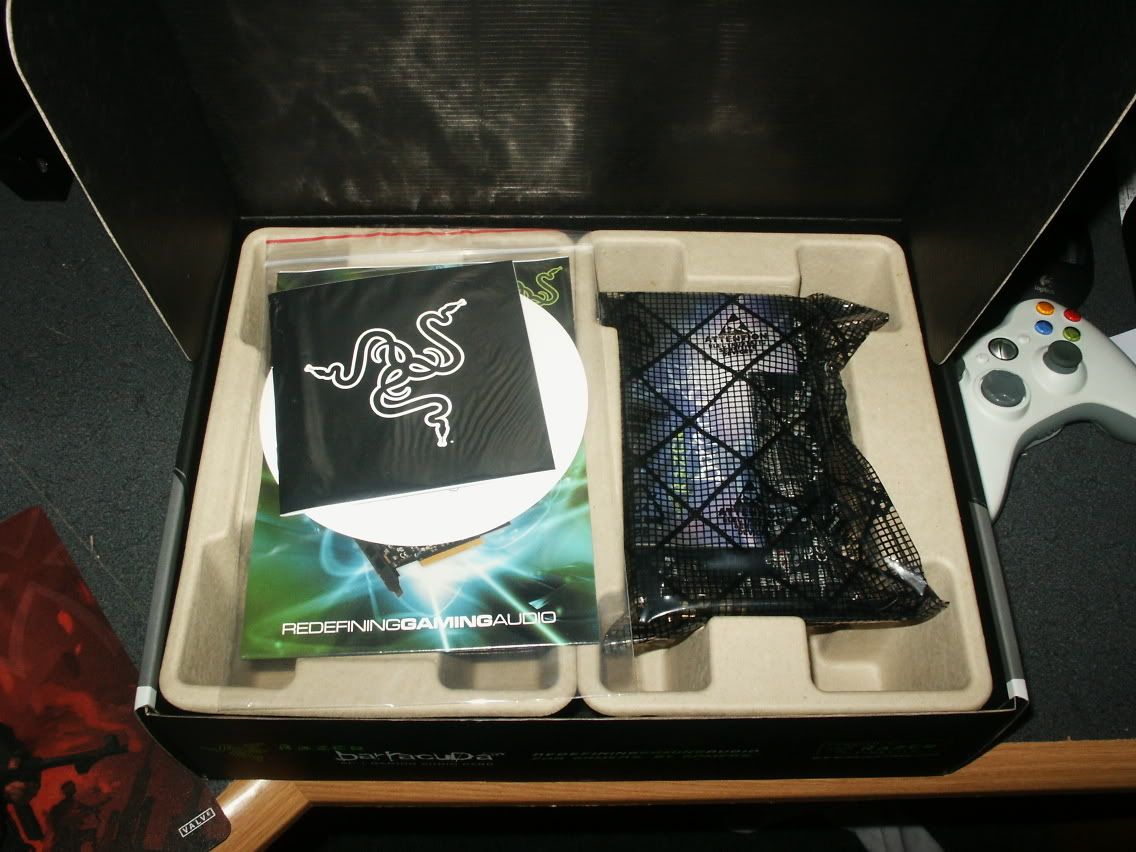
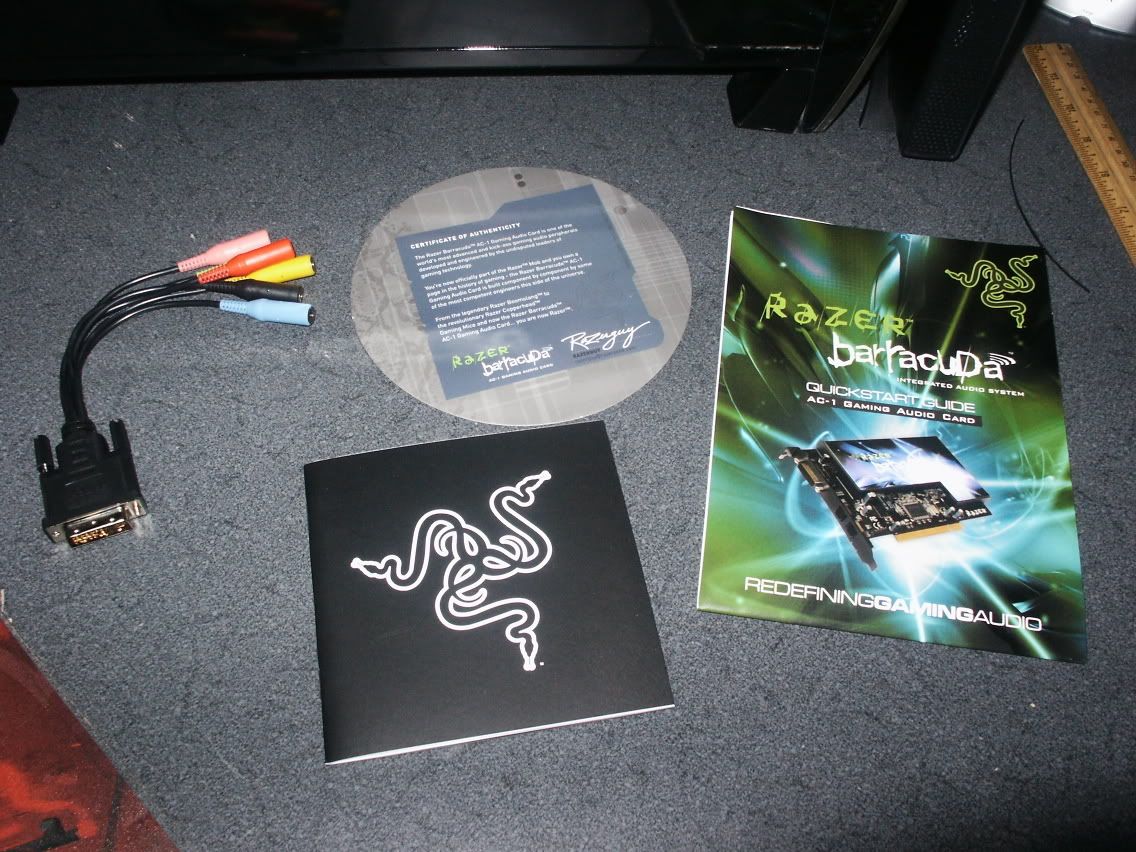
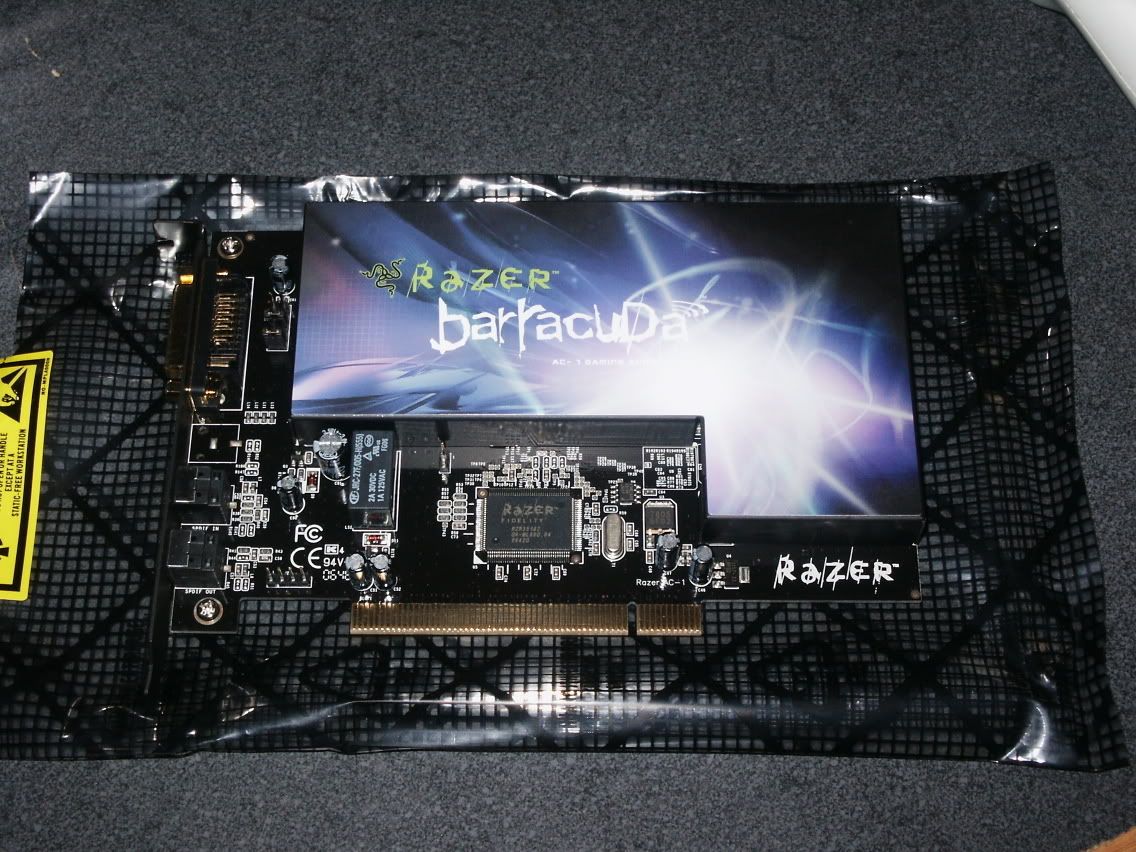
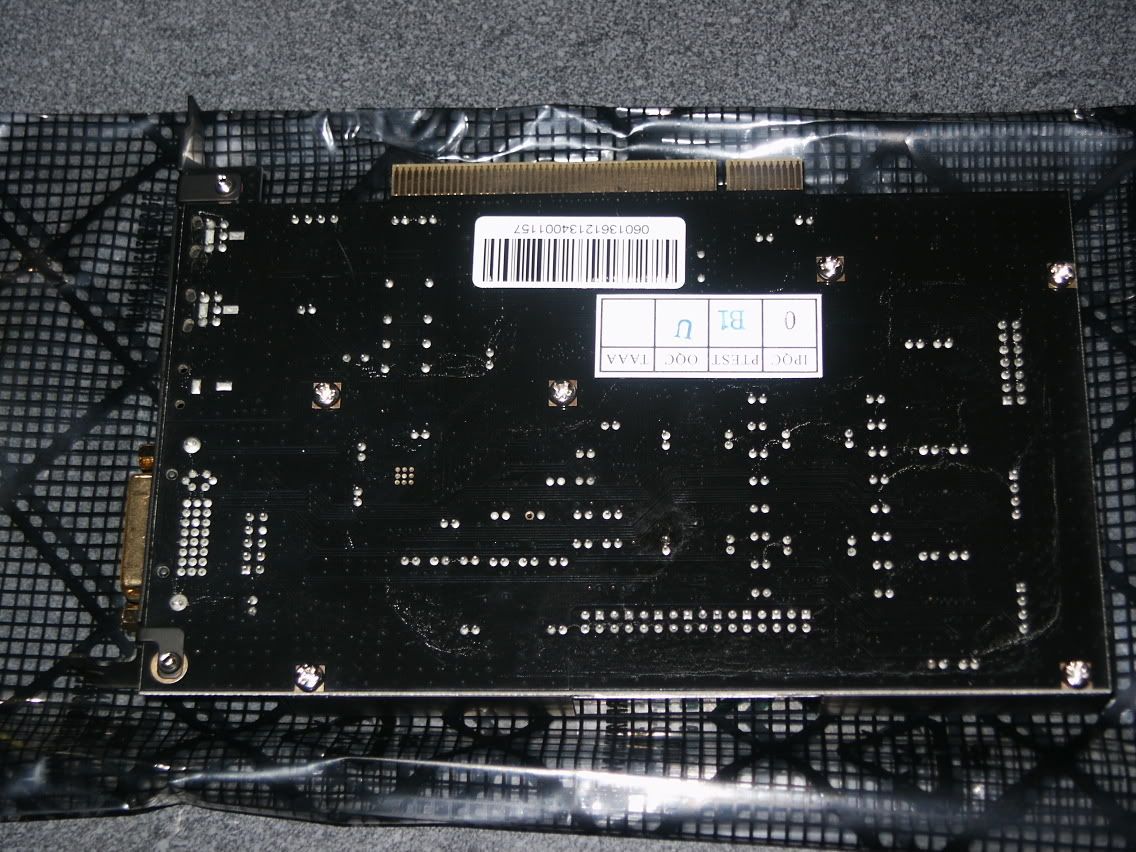
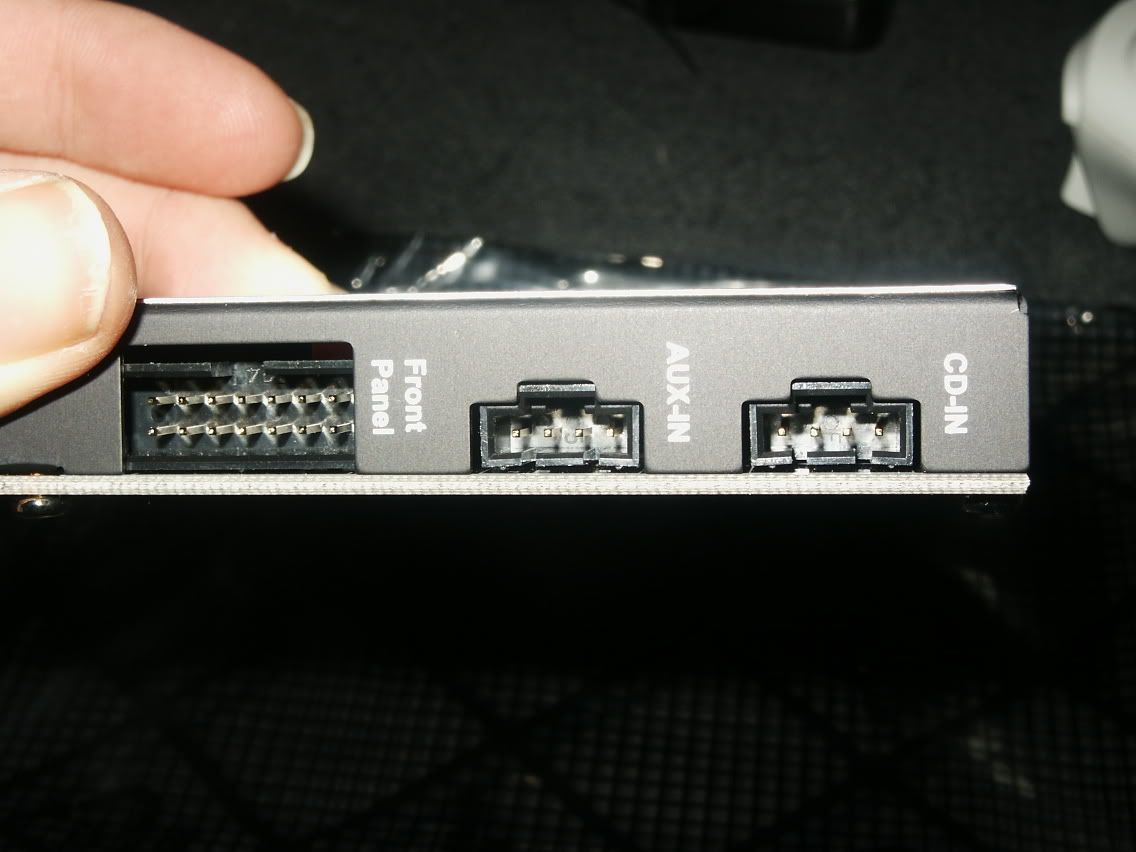
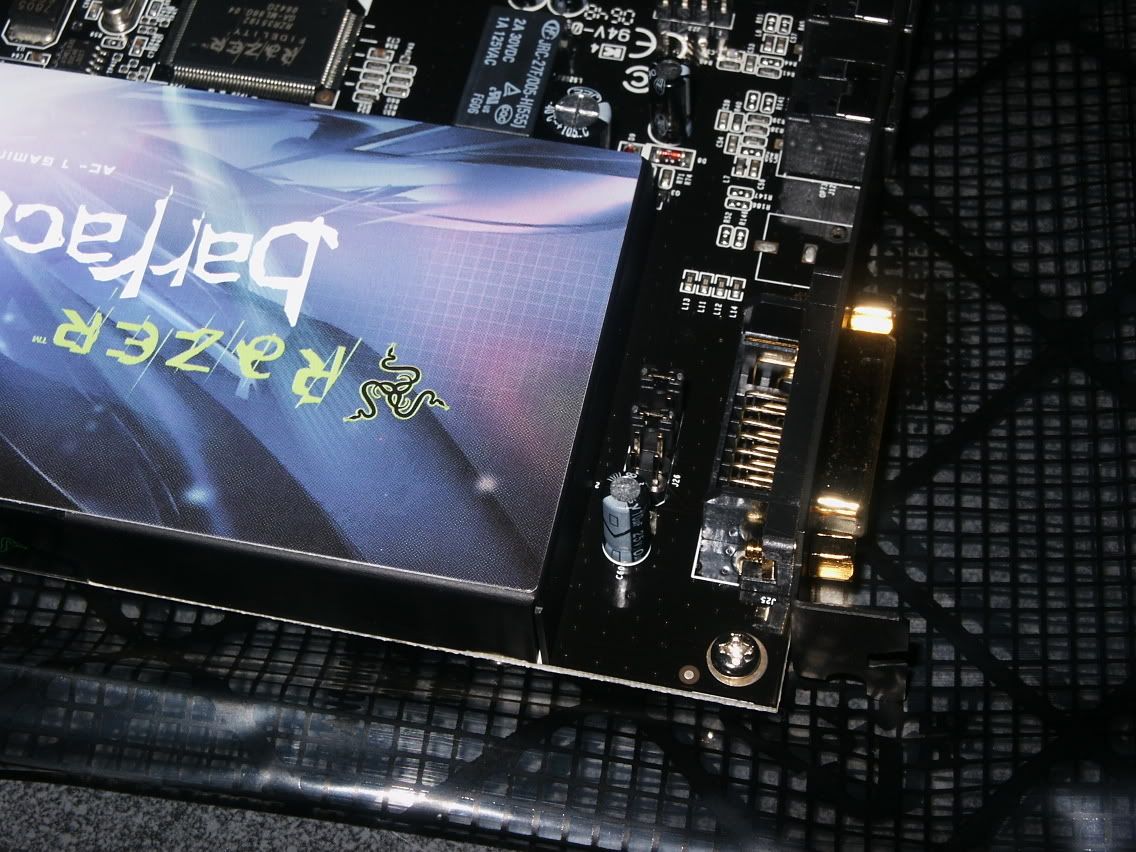
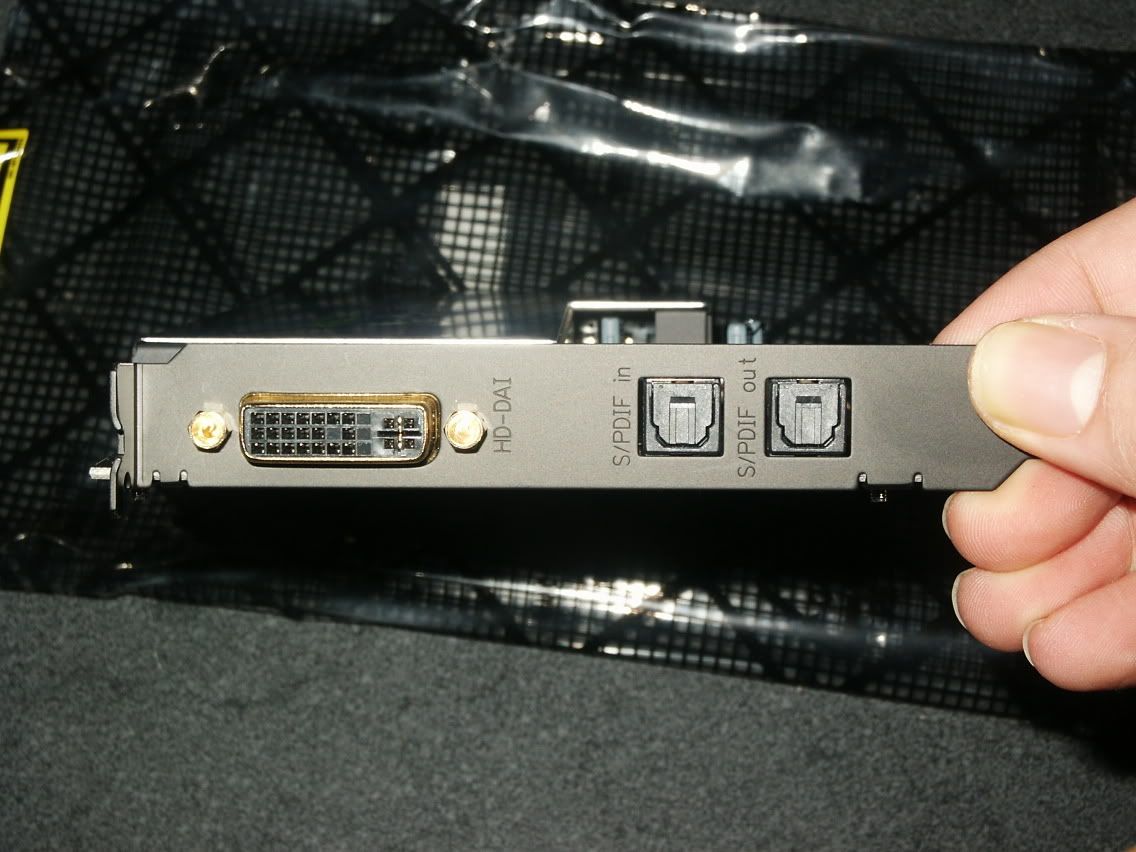
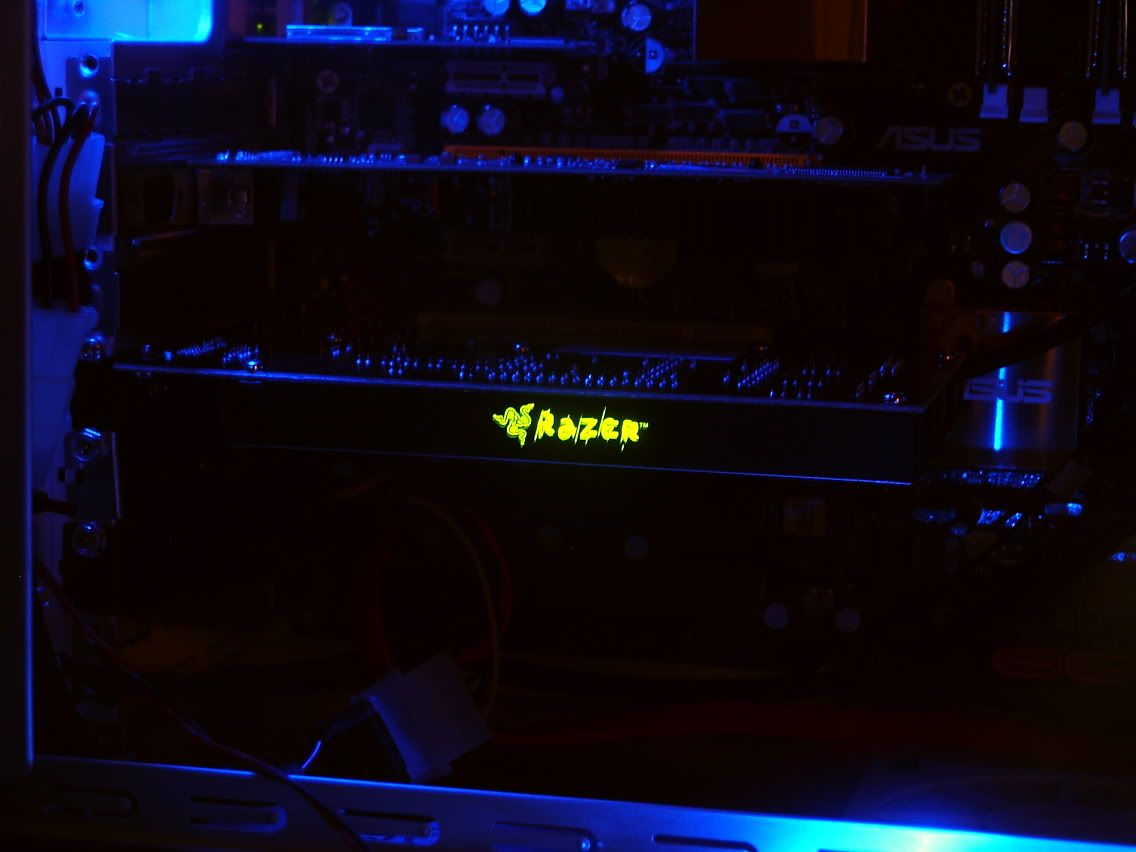

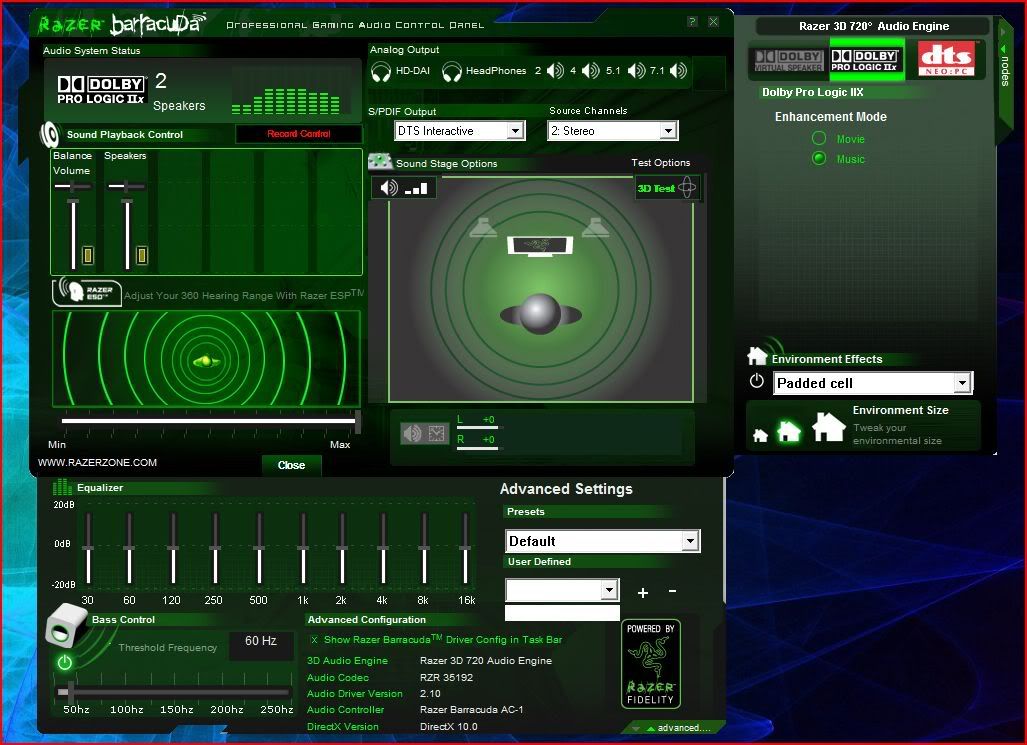

 Reply With Quote
Reply With Quote
 .
.



